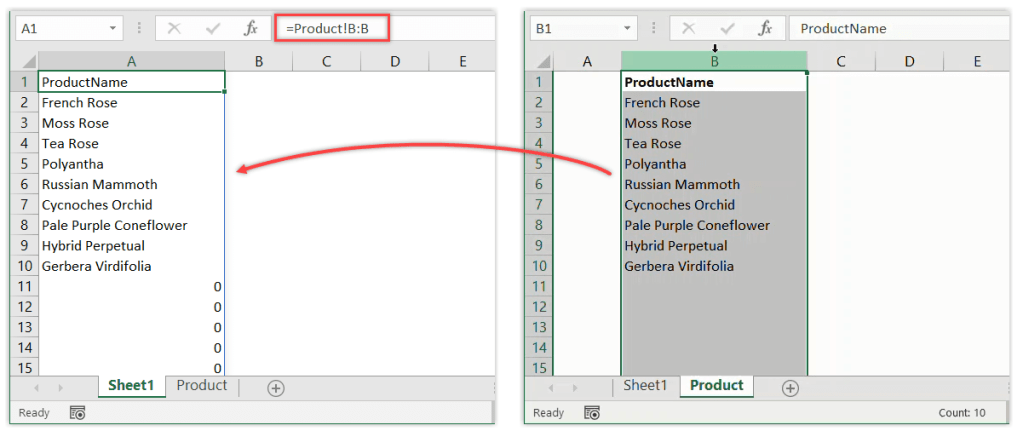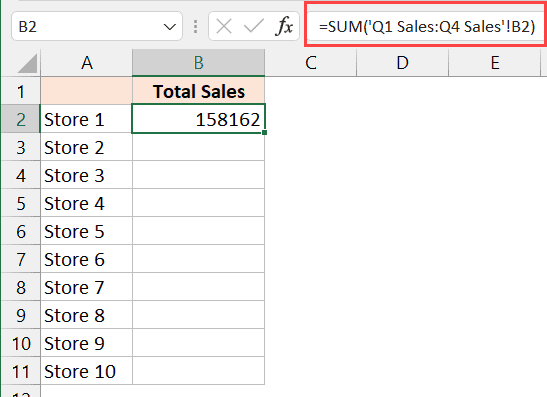5 Ways to Link Data Across Excel Sheets Easily

Linking data across multiple Excel sheets can be a daunting task for many users, yet it’s a crucial skill for efficient data management, analysis, and reporting. Excel, the robust spreadsheet software by Microsoft, offers several methods to create dynamic links between sheets, ensuring that when data in one sheet changes, the corresponding data in other sheets updates automatically. In this comprehensive guide, we’ll explore five effective methods to achieve this, providing you with the knowledge to enhance your Excel proficiency.
1. Using Cell References

The simplest method to link data in Excel is by using cell references. Here’s how you can do it:
- Select a cell in your destination sheet where you want to link the data.
- Press
=to start your formula, then navigate to the source sheet and click the cell you want to reference. You can also type the reference directly. - Press Enter to confirm the cell link.
For example, if you want to link data from cell A1 in 'Sheet1' to a cell in 'Sheet2', you would write:
=Sheet1!A1🌟 Note: Ensure that the sheet name does not contain spaces or special characters to avoid errors in formula syntax.
2. Creating Named Ranges

Named ranges add another layer of flexibility and readability to your data linking process:
- Select the cells in the source sheet you want to name.
- Go to Formulas > Define Name or press
Ctrl + F3. - Name the range (e.g., 'SalesData').
- In the destination sheet, enter the name of the range as if it were a cell reference. Excel will automatically link to the named range.
This approach simplifies data management because names are more intuitive than cell references, especially in complex workbooks.
📝 Note: Use a consistent naming convention to avoid confusion and make your formulas more readable.
3. Excel Table Links

Excel tables provide structured references, which can be beneficial for linking data:
- Convert your data range into a table by selecting any cell within your data and pressing Ctrl + T or selecting Insert > Table.
- Name your table for ease of use.
- Link to the table from another sheet by using structured references, e.g.,
=Sales[Total]where 'Sales' is your table name and 'Total' is the column header.
✅ Note: Tables will automatically update linked references if new data is added or columns are modified.
4. Using External Links

If you’re linking data from another workbook:
- Open both workbooks, the source and the destination.
- In the destination workbook, type
=then switch to the source workbook, and select the cell to link. - Excel will create an external link, e.g.,
=[Book1]Sheet1!$A$1.
Remember to use the Workbook Link Options to manage how external links are updated or broken.
⚠️ Note: Be cautious with external links as they might cause update issues if file locations or names change.
5. VBA and Macros

For complex linking scenarios or automation:
- Create a simple macro in VBA to link cells:
- Open the Visual Basic Editor with
Alt + F11. - Insert a new module.
- Write a VBA function to link data from one sheet to another.
Sub LinkData()
Dim ws1 As Worksheet, ws2 As Worksheet
Set ws1 = ThisWorkbook.Sheets("Sheet1")
Set ws2 = ThisWorkbook.Sheets("Sheet2")
ws2.Range("A1") = ws1.Range("B1").Value
End Sub
This method offers the most flexibility but requires some VBA knowledge.
🔹 Note: Always backup your workbook before modifying it with macros, as errors can lead to data loss.
In conclusion, linking data across multiple sheets in Excel can significantly enhance your data management capabilities, allowing you to maintain data consistency and perform complex analyses with relative ease. Each method we've explored here offers its unique benefits, from the straightforward simplicity of cell references to the dynamic capabilities of VBA. By mastering these techniques, you'll be better equipped to handle extensive datasets, streamline workflows, and make your spreadsheets more interactive and responsive to change. Remember to practice these methods, keep your workbooks well-organized, and always save backups to prevent data loss.
How do I update links in Excel?

+
To update links in Excel, go to the Data tab, select Edit Links, then Update Values. If links are broken, use Change Source to correct the link path.
Can I link to specific cells in different sheets without using formulas?

+
Yes, by using Excel’s 3D References or Excel Tables. For 3D References, type =Sheet1:Sheet3!A1 to refer to cell A1 across sheets. Tables work similarly but offer more structure.
Is there a risk of data loss when linking data in Excel?

+
Data loss risk is minimal when linking data if done correctly. However, ensure to save backups as errors in formulas or VBA code might cause unintended data changes.
Can I link charts across sheets in Excel?

+
Yes, charts can be linked by linking their data source. Create the chart, then update its data range to link to cells in different sheets.
What are the limitations of linking data with external workbooks?

+
Limitations include the need to keep file paths consistent, the potential for broken links if files are moved or renamed, and performance issues with large, heavily linked workbooks.